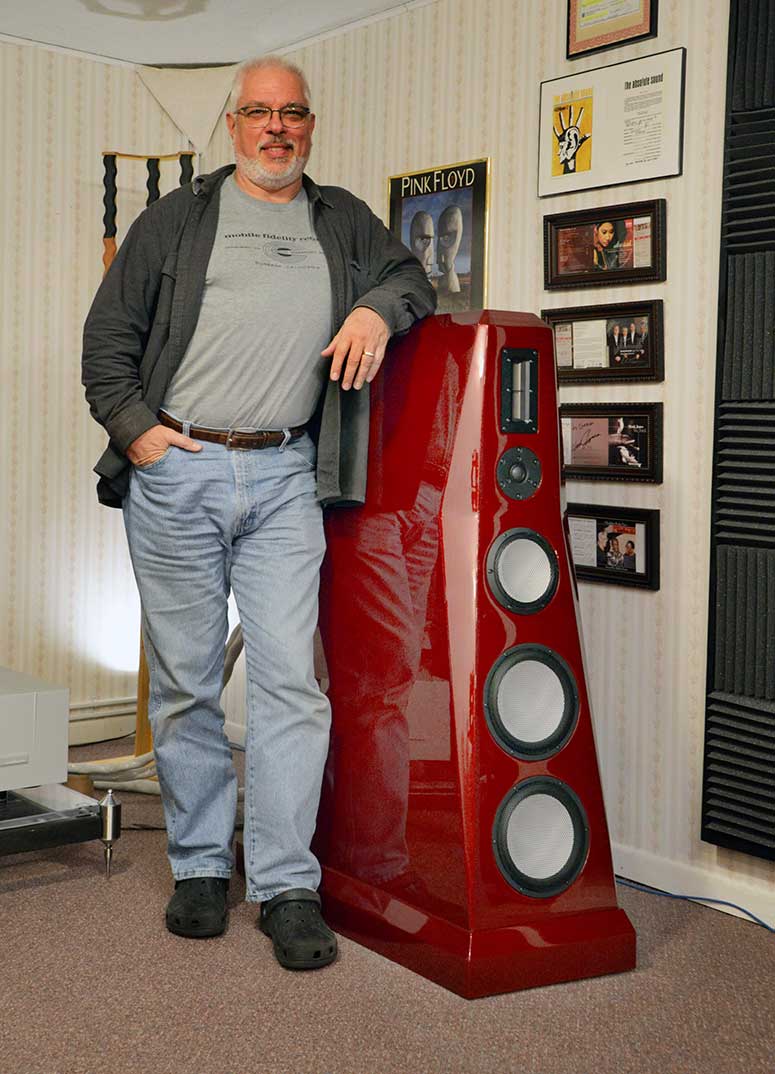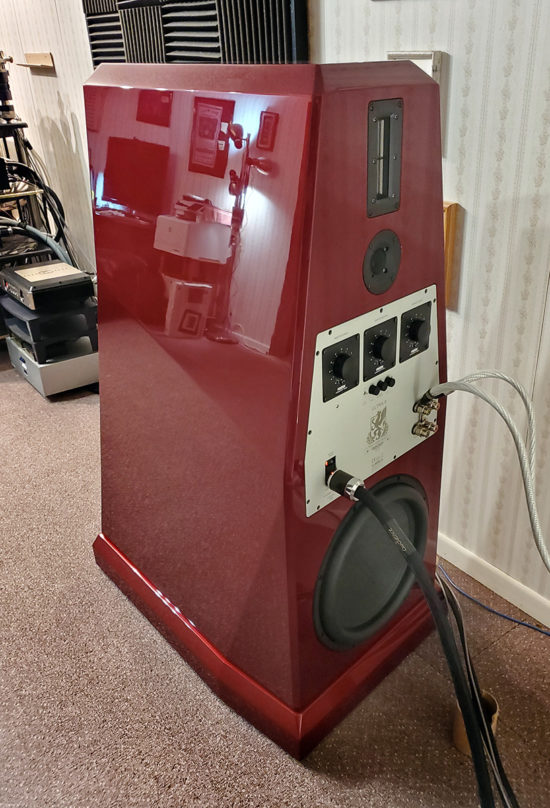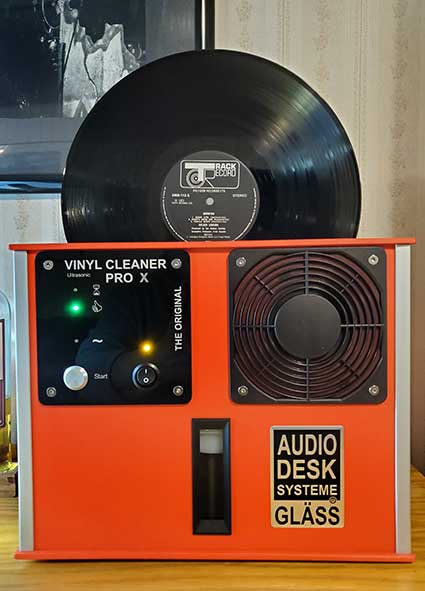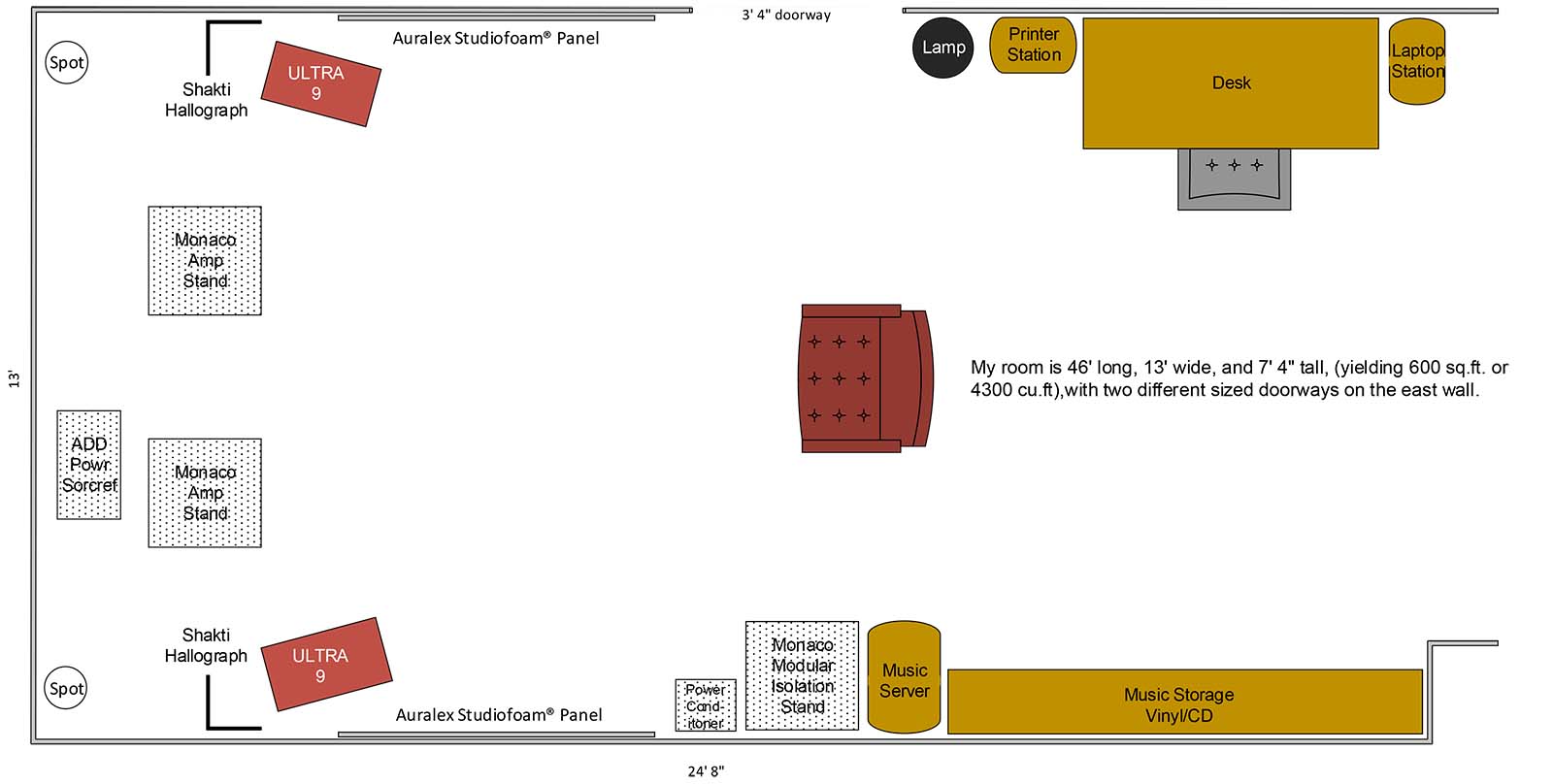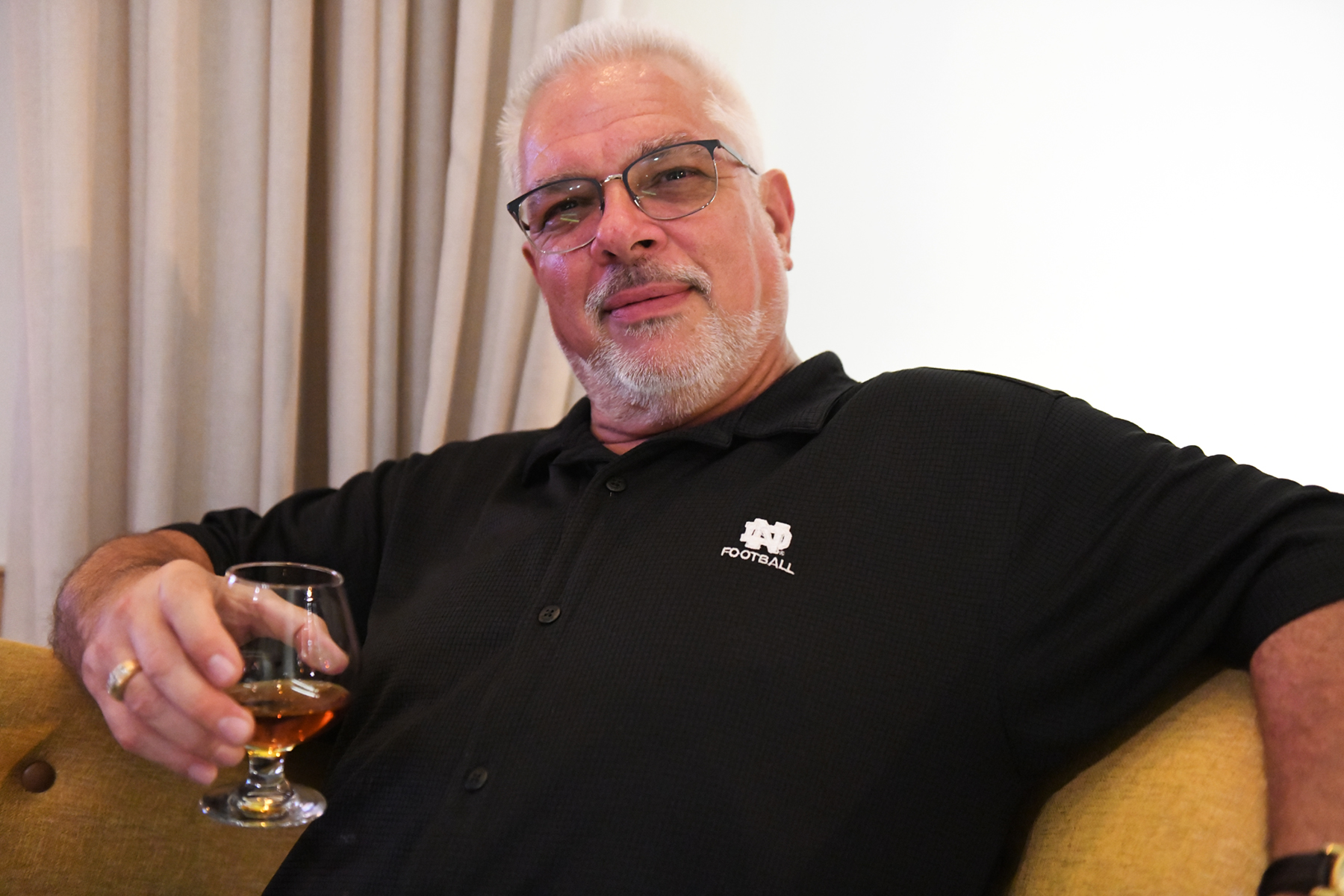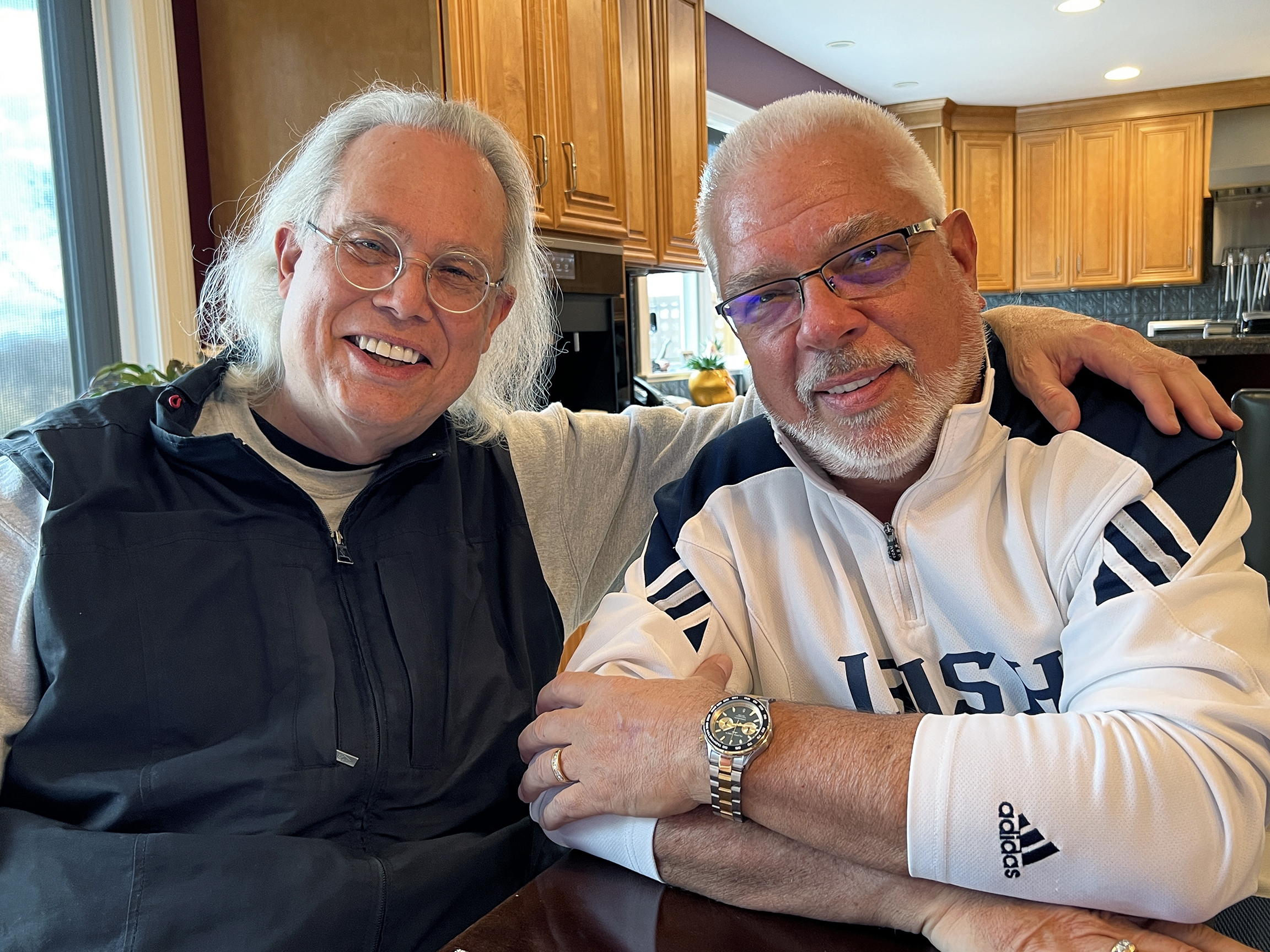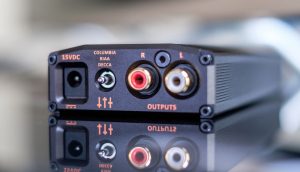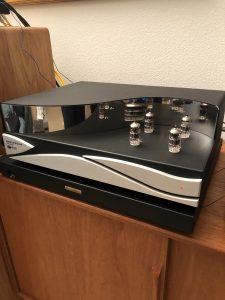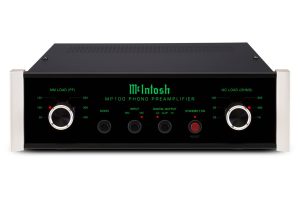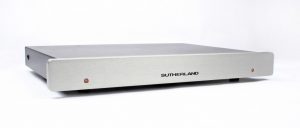Honey, I Shrunk the Phono stage
I've had the privilege of knowing Dan Wright for the past twenty years. Over that time, I've seen ModWright burgeon from its humble beginnings as an upgrade or modification-only service provider, to becoming a respected manufacturer of a full line of products. Over the past two decades, ModWright has established an unwavering benchmark in providing both remarkable sounding gear and exceptional value. In fact, I was so impressed with ModWright's flagship phono preamplifier, the PH 150 Reference introduced in 2015, that I purchased mine after reviewing for another publication. As such, it was a no-brainer that I should audition their latest and relatively affordable offering.
At just ten inches square, standing four inches tall, weighing less than 11 pounds (not including the external power supply), the new ModWright Instruments PH 9.0 phono stage made its public debut at RMAF 2018, where I got my first taste of its abilities. With an equally diminutive outboard solid-state power supply (just seven inches wide, nine inches deep, and three inches tall), both component chassis of the PH 9.0 occupy just over half the volume of the ModWright PH 150 Reference Phono stage chassis, sans its own outboard solid-state power supply, of course!
The faceplate is symmetrical, with the stylized ModWright logo dead center and the designation PH 9.0 just below. Two 2" diameter knobs are centered vertically to either side of the logo, Select to the left, Load Impedance to the right. The power toggle switch and its LED indicator lamp are just inside and in line with the bottom of the Select knob, and the three-position attenuation toggle switch -12, 0, or -6 dB, is located just inside and in line with the bottom of the Load Impedance knob. Turning the Select knob, from left to right, selects MM, Mute, or MC inputs, and the Load Impedance knob offers six resistance settings, from left to right, 10, 20, 50, 100, 250, or 470 Ω.
The top and sides are covered by a removable panel held in place with six hex-headed machine screws, three per side. These are easily unscrewed using the included Allen tool, making short work of removing the symmetrical top/side panel for tube installation, or swapping down the road, should you care to experiment with tube rolling.
The rear is every bit as Spartan, with three sets of RCA jacks, one each for MC input, MM input, and output, located along the bottom quarter of the chassis when viewed from left to right, and the DC umbilical input socket (from the power supply) is centered vertically on the right. The knurled nut grounding post is slightly above and between the MC and MM inputs, and the mono/stereo toggle switch is slightly above and between the MM input and outputs. My unit did not have the optional balanced outputs, so it had the blank mounting plate over that optional location, directly above the MM input, mono/stereo switch, and output jacks. To complete the back panel, the company name, website, serial number and "Handcrafted in the U.S.A.," is stenciled in white above the MC inputs.
The power supply is an all-black box, with only the stylized ModWright Logo dead center on the front panel, with the designation "Power Supply" stenciled beneath it. The back panel has only umbilical connection socket to the left, and the IEC socket to the right.
My PH 9.0 shipped with Sovtek 6C45s and JJ Electronics 6922s. The 6C45 is an indirectly heated triode designed for wideband amplification of high-frequency voltages, selected for their incredible linearity, very low noise, and low plate resistance. In fact, the 6C45 may well represent the finest, most up-to-date expression of small-signal triode technology available today. A nine-pin medium gain heater-cathode type dual-triode, the 6922 (6DJ8, E88C) is valued for its characteristic high-frequency clarity and warm, smooth midrange. Both tubes were chosen by ModWright for their medium-high mu (voltage gain) and low plate impedance, and because they deliver a lot of current, permitting high gain with a minimum of noise.
That there are marked similarities (with notable variations, which we will address) to the circuit topology employed by the ModWright 150 Reference phono stage should come as no real surprise, and a direct comparison between the two models seems more than justified.
The first gain stage of both devices uses a single 6C45 per channel in a tube/JFET hybrid circuit. However, for the second gain stage, the PH 9.0 employs Constant Current Source (CCS) loading where the PH 150 Reference uses choke-loading. While more costly to implement, most agree that choke-loading offers decided sonic benefits, such as no loading effect on the rectifier and power transformer, very low ripple factor (when compared to series inductor and shunt capacitor filters), and good load regulation. CCS loading was chosen to provide great performance and still maintain affordability
The final buffer stage for both phono stages employs one 6922 (6DJ8/7308/E88CC) dual-triode per channel, with coupling between the first and second gain stage and input to the buffer stage achieved using ModWright's own custom, oil-impregnated, polypropylene M Series Truth capacitors. ModWright affirms that their M Series caps are leveraged because of their ability to convey both weight and body, and are therefore instrumental to maintaining the ModWright "house sound."
The output buffer stage of the PH 150 Ref is direct-coupled to a Lundahl gapped output transformer, with a selection of different secondary windings providing either unity gain or 6dB of attenuation. The final 12dB of attenuation in the PH 150 is achieved using a simple voltage divider. With the PH 9.0, coupling is achieved using an inductive load, and attenuation, both -6dB and -12dB, is handled by divider networks before the output buffer, again to keep the production costs down yet still achieve the overall sonic goals.
Where the PH 150's design offers both single ended and balanced outputs by default, the stock PH 9.0 is fitted only with RCA outputs as I've described. However, for an additional $300, users can choose to have an optional 1:1 output transformer section added, providing a fully differential output from the single ended circuit, allowing fully balanced output operation.
While it is important to have a sense of what concessions ModWright has made to deliver this level of performance at such a competitive price, it is even more important to experience that accomplishment. If you are anything like yours truly, once you hear the PH 9.0, you will be even more impressed upon hearing how they have managed to stuff the lion's share of the PH 150's stellar performance into such a small, stately chassis, at just under forty percent of the price!
A Commanding Voice
The PH 9.0 spent a little over two weeks (approximately 400 hours, my minimum preferred amount of run-in time on any piece of gear before making any critical sonic assessment) "seasoning" in another system before being dropped into my reference rig for a serious listen.
The first thing that was apparent the moment I lit up the 9.0 was its deafening silence! Every piece of electronics has its own level of self-generated noise, especially devices like phono stages and DACs. This little guy was as starkly quiet as its big brother, the PH 150 Ref, AND, maybe even my $14,500 reference phono stage, the Dynamic Sounds Associates Phono II! This was going to be interesting…
Accuracy and extension in the lowest register are crucial to the foundation and credibility of the resultant musical gestalt, as well as to achieving articulate soundstaging and imaging from any component, again, especially from a phono preamplifier. Well, the PH 9.0 gets very high marks here, with well extended, wonderfully controlled bass that delivers both excellent detail, and exhilarating impact. Moving on up through the midbass, the PH 9.0 delivers the goods in terms of texture, tone, and impact of kick drums and tympany, double bass, cello, even contrabassoon.
Listening to recordings as diverse as Neil Young's 2009 Archives Official Release Series reissue of his 1972 masterpiece, Harvest (NYA ORS 04), or the 1981 Mobile Fidelity Sound Lab superb remaster of the 1972 London release of the Solti/CSO/Chorus of Beethoven's Ninth Symphony (MFSL 2-516) was remarkable. The space of each recording is very clearly captured on these recordings, and if there are incongruities in the balance of lowest portions of the audio spectrum, that spatial information, as well as the power of instruments like acoustic or electric bass, or kick drums or tympani, are easily, and often completely, lost. I can't tell you just how surprised, and pleased, I was to find a phono stage in this price range that performed so evenly and admirably in this respect.
There is some real enchantment in the midrange here, as it seems to effortlessly and fluently present that inescapably correct body and bloom one ultimately expects from a good valve preamplifier. Authority through the so-called power range (J. Gordon Holt's, The Audio Glossary, claims that range to be 200Hz to 800Hz, or from the very upper bass regions into the middle midrange realm), is remarkably solid and exceptionally well-controlled. Its ability to render accurate tonal color and to capture the vibrance and texture of voices while maintaining a remarkable level of resolve and transparency may be unprecedented at this price, and is not markedly dissimilar to the remarkably lofty performance of the PH 150 Ref.
With the 1983 Rickie Lee Jones EP, Girl at Her Volcano (Warner Bros. 1-23805), the wile and charm of Rickie's captivating voice was rendered with near utter perfection. The same held true with other evocative women vocalists like Sarah McLachlan, Tori Amos, Kim Carnes, or Hannah Reid (London Grammar); every inflection, each subtle nuance, even diminutive changes of breath control, were clearly exposed and expressed. Very impressive.
Not to ignore the male voice, the robust, charismatic voice of Stevie Ray Vaughn, which is all too often overlooked in favor of his obvious guitar mastery, is astonishingly emotive with cuts like "Tin Pan Alley" and "The Things (That) I Used To Do" from the 2010 Sundazed Music remaster of his 1984 release, Couldn't Stand The Weather. By the way, if you are a fan of that album, I'd urge you to pre-order the pending Mobile Fidelity UD1S treatment of this LP. Even with 7000 planned copies, this title will sell out quickly!
I was completely enthralled by how chillingly powerful David Bowie's distinctive and arresting vocals were portrayed on either the 1981 Mobile Fidelity remaster of the 1972 Glam-Rock landmark The Rise And Fall Of Ziggy Stardust And The Spiders From Mars (MFSL 1-064), or the 1982 12", 45 RPM, single of the film score, Cat People (Putting Out Fire) (MCA Records - MCAT 770).
Treble performance is shockingly well accomplished, if not quite as refined or ultimately as extended as that of the PH 150 Reference. But with delightfully buoyancy, splendid detail, and an exceptional taste of shimmer and air, it affords a wonderful sense that you are hearing everything, with no softening of detail or focus.
This attribute was so clearly demonstrated with ethereal and atmospheric recordings like the Mobile Fidelity remaster of composer and electrified saxophone innovator John Klemmer's Touch (MFSL 1-006). Its ability to recreate the uppermost octaves with an exceptionally high degree of purity and extension, creating a wonderful sense of shimmer and air, is more than noteworthy in this class. While the 9.0 is truly quite good in this regard, it does fall somewhat short of reconstructing that elusive sense of graceful effortlessness, of unfettered extension, of that perception of the air around the instruments that allows them to regenerate the final measure of trailing ambiance and decay that is so lifelike and exhilarating with the best phono stages available.
This little upstart is also more than merely good at generating dynamic contrasts, both in the macro (scare-your-pants-off!) realm and indicating astonishing expressiveness and superb gradation of the micro variety as well. This last ability is no doubt a result of its exceptional, class-leading, quietness. Overall, its ability to recreate the genuine sense of pace, rhythm, and drive, assuming the transcription system is up to the task as well, is irresistible.
When it comes to both recreating soundstaging queues and interpreting image specificity and size, the PH 9.0 is a stunner. While it may not be as resolute and transparent as the PH 150 Ref, it is no slouch here, and is a clear overachiever in its class.
Finally, I want to single out its remarkably realistic tonal balance, octave to octave. Tonality and texture are rendered with remarkable accuracy, substance, and faithfulness across the entire audio spectrum, giving the PH 9.0 one of the most authentic voices I've heard under about $6000. This attribute, along with its astonishing degree of quietness, bass and general pitch definition, and its startling dynamic prowess, make this one of, if not the, most attractive phono stages available in today's market, maybe for as much as twice its asking price.
In my opinion, the application of the robust, external, solid-state power supply affords the PH 9.0 an exceptionally low noise floor for its class. The benefits of that lowered noise floor are apparent and affect the overall downright magical performance of the PH 9.0, resulting in more vivid tone, more articulate soundstaging, and a seductive dynamic eloquence not readily available from many of its competitors.
Best in Class
If you look at my current system (click on my name—in red—at the top of the page), you will see that every single item listed, individual cable sets included, sells for more than the retail price of the PH 9.0! If a device in this class can be dropped into a system costing well over 100 times more than its asking price, and still manage to sound this authentic and authoritative, just imagine what kind of swagger and dominion it will bring to a system more in line with its selling price.
No, I'm not suggesting that it would be mistaken for something two-and-three-quarters times more expensive like the ModWright PH 150 Reference, but the disparities are subtler than you would expect for the difference in price. I am not exaggerating when I say that this latest phono stage from ModWright may just be, pound-for-pound, the most significant achievement in performance per dollar that ModWright has yet achieved. Hell, even if you aren't in the market for one, go give it a listen. It is one of the most accomplished and over-achieving performers available in its class, PERIOD! Most enthusiastically recommended...
PH 9.0 Phono Stage
Retail: $2900 Optional Balanced Outs: Transformer Coupled ($300 additional cost)
ModWright Instruments, Inc.
21919 NE 399th Street
Amboy, WA 98601
360.247.6688
Specifications
- Gain: MM 52dB (46dB, 40dB), MC 64dB (58dB, 52dB),
- Gain Adjust: 0, -6dB, -12dB
- Cartridge loading: MM Loading 47K fixed, MC Loading 10, 20, 50, 100, 250, 470 Ω.
- Stereo/Mono: Rear Toggle
- Frequency: 20Hz – 50Khz (+/-.2dB)
- Tubes: (2) 6C4 – Sovtek provided. (2) 6922/6DJ8/7308 - JJ Electronic E88CC provided
- Power Supply: External, solid state
- Diemnsions: Preamp 10" W x 10" D x 4" H. Power Supply: 7" W x 9" D x 3" H. Power Umbilical: 4-pin XLR, 6 ft
All images by Greg Weaver














